This three-starred micro-restaurant serves intimate tasting meals cooked in copper.
Brooklyn Fare is a gourmet grocery store chain in New York founded in 2009 and currently operating four storefronts in the city. At the moment, the company’s store on West 37th Street in Manhattan also contains within it a micro-restaurant called Chef’s Table. The concept is compelling: eighteen guests sit at a counter while a chef and staff prepare an elaborate prix-fixe multi-course tasting menu.
The original Chef’s Table was at the store’s flagship property on Schermerhorn Street in Brooklyn. The venue was a cramped D-shaped stainless-steel countertop where guests sat just a few feet from the busy staff.

Naturally, my eye is drawn to that hanging rack of copper. Here’s a better photo of that array.

This photo shows a slightly different angle.

I spot smooth-finish copper, cast iron handles with plain baseplates, and three silvery rivets: to my eye this is steel-lined Mauviel. The photo below seems to confirm it: the interior surface of the pans hanging at the back have the distinctive concentric-ring finish — like a vinyl record — left by Mauviel’s grinding process. With their thrice-riveted plain baseplates, the pans must have been manufactured prior to 2015, which is when Mauviel began monkeying around with rivets. There’s no way I can tell from a distance whether these are 1.5mm or 2.5mm pieces, but at Chef’s Table price point I would hope they’d invest in the good stuff!

Sometime in 2016 or so, Chef’s Table migrated to a larger space within the Brooklyn Fare store on West 27th Street in the Hell’s Kitchen area of Manhattan. The new incarnation replaces the cramped D-shape countertop (with a hapless server trapped in the center) with a more spacious U-shaped setup in polished wood. I am relieved to see that the copper came along in the move, though it has now migrated to a long crowded rack. I suspect some pans are double-hung with smaller pieces nestled inside larger ones.
I would love to see it, but alas, reservations are quite hard to obtain. The inimitable Adam Platt of New York magazine sums up the experience in his 2018 review:
Is this elaborate show worth the reservations hassle, the extreme prices (US$395 and counting), and the possible indignity of arriving at the back of some random Hell’s Kitchen grocery store only to be presented with an ill-fitting loaner jacket? As a vocal critic of the pretentious tasting rooms and omakase-style dinners that have overrun the upper echelons of the city’s fine-dining scene lately, it pains us to admit that, if you avoid the inevitable barrage of trophy wines and limit yourself to one visit, say, every year or so, the answer to the question is a hearty “yes.”
Has anyone experienced a meal there?
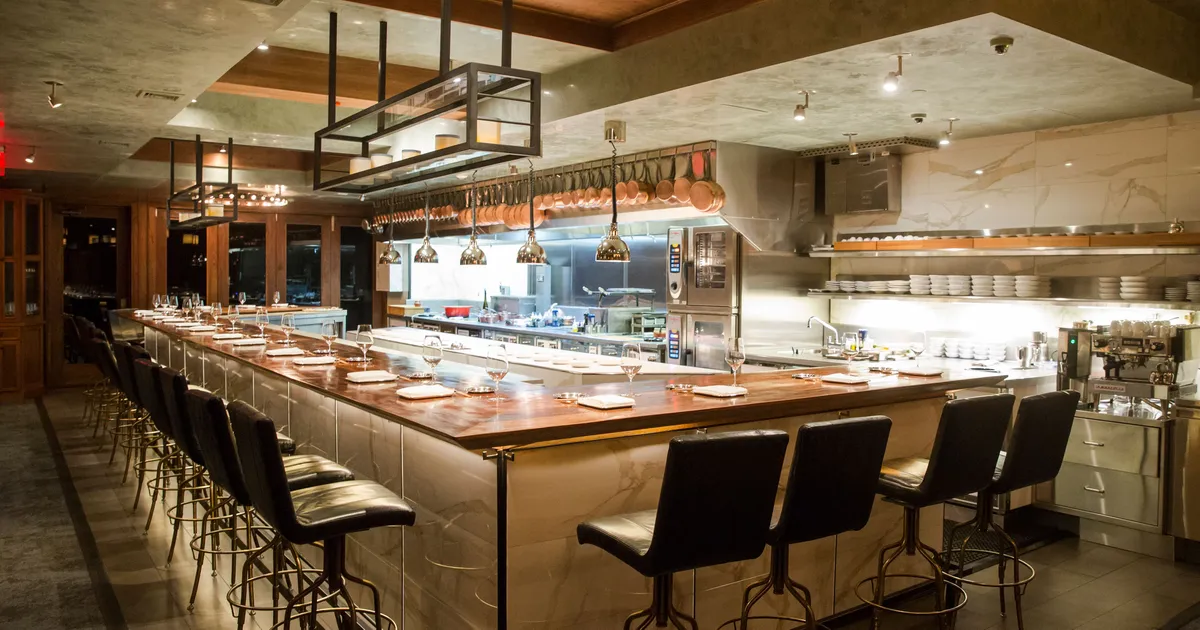
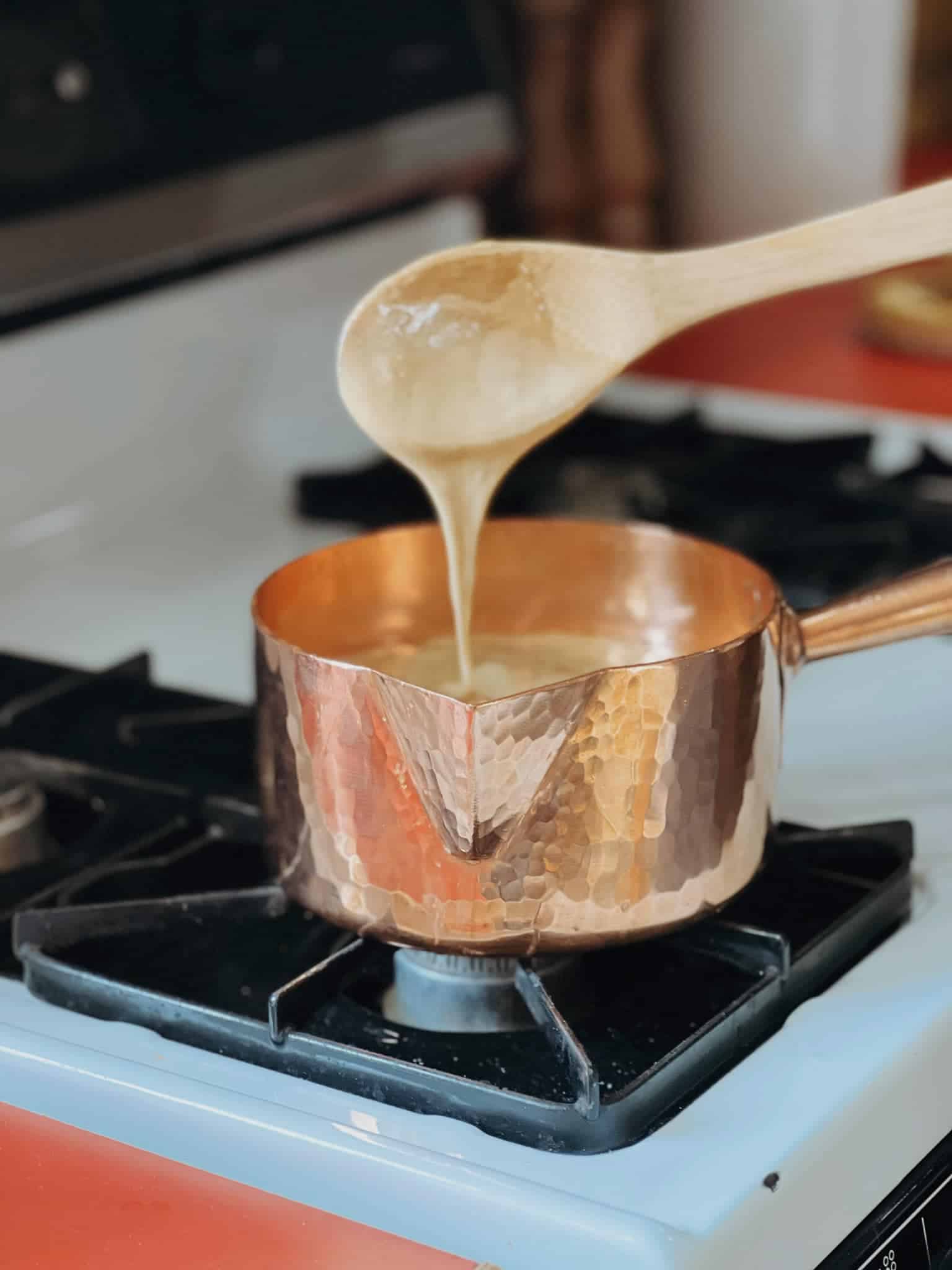

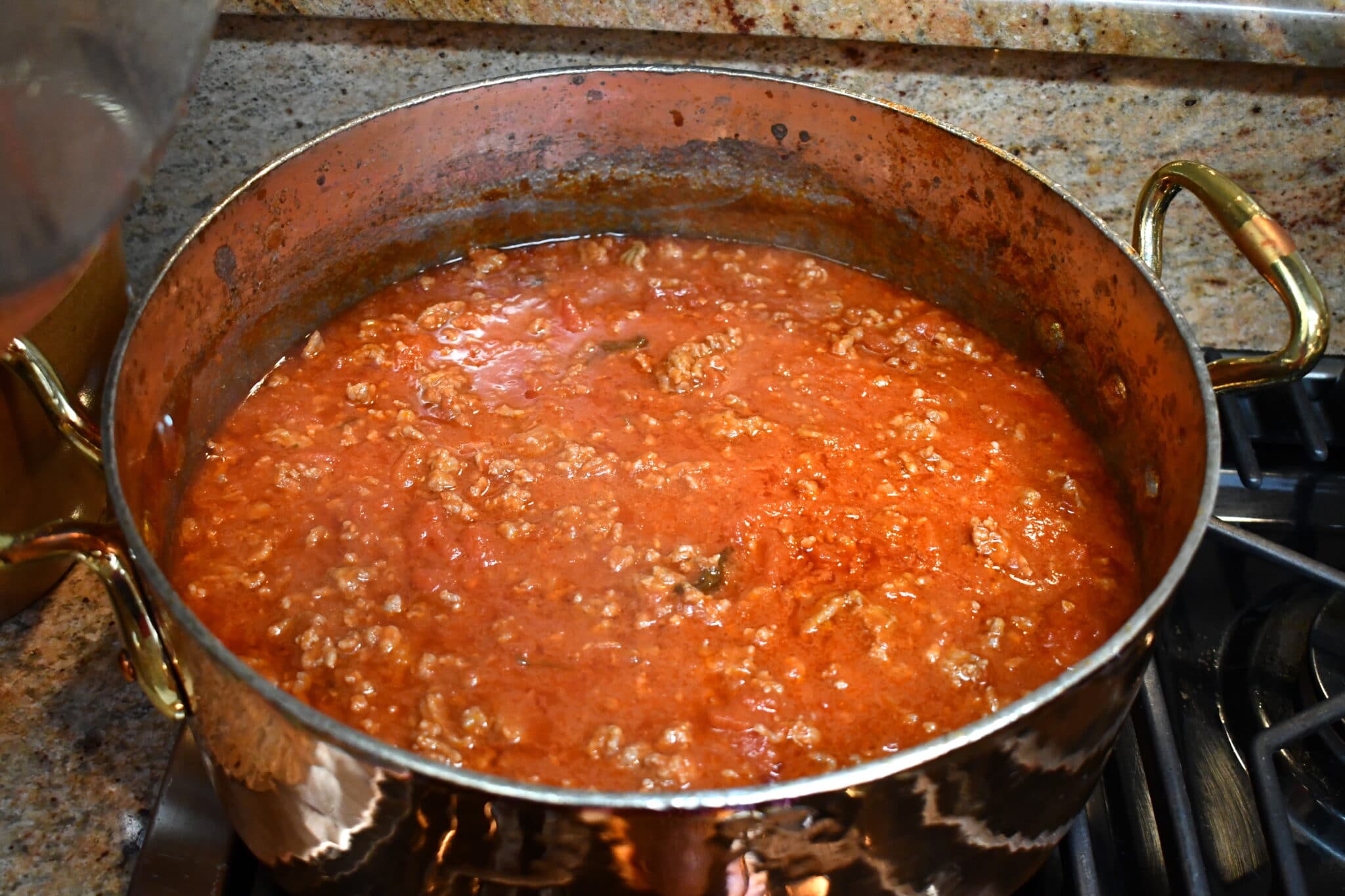
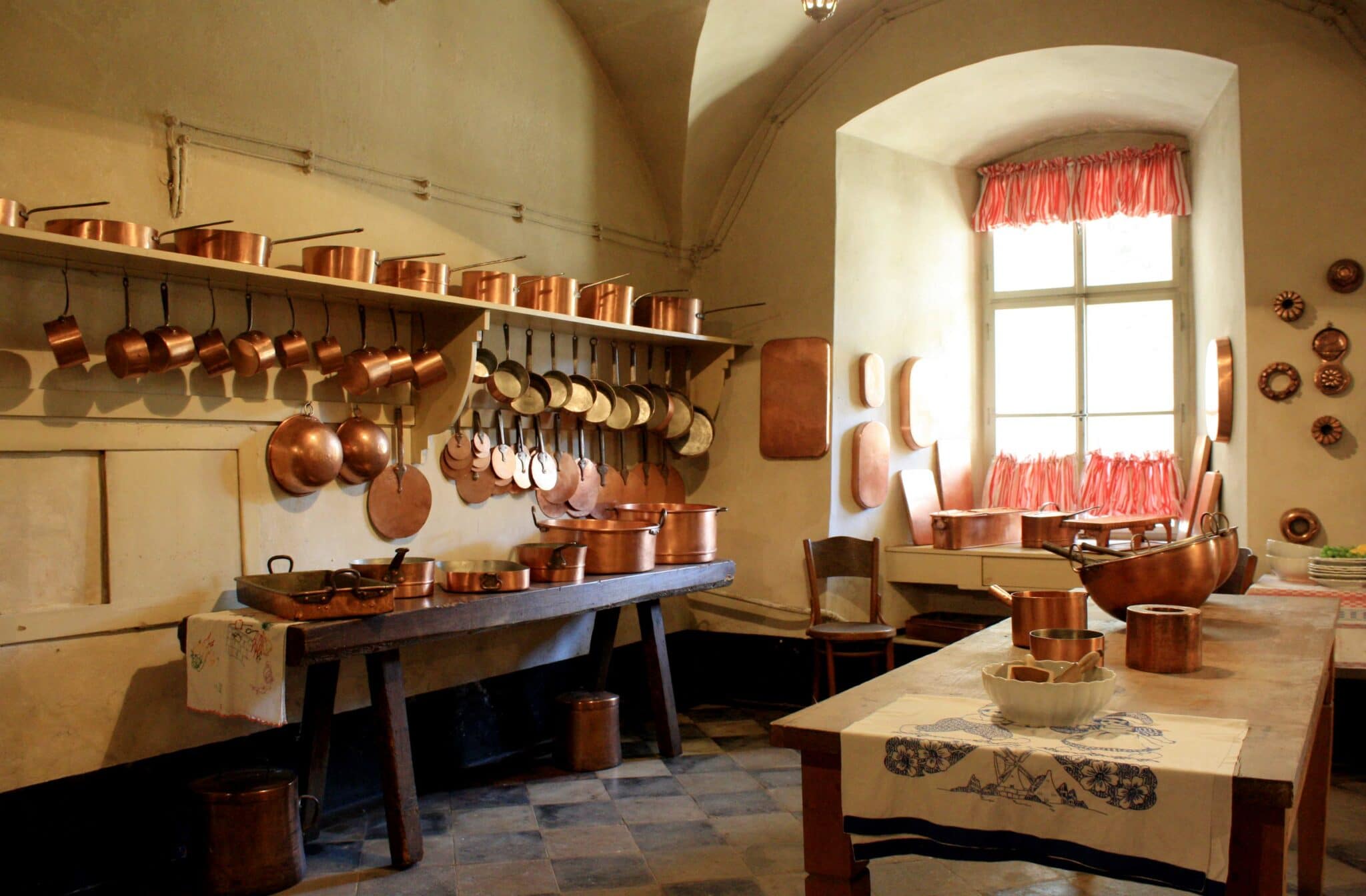

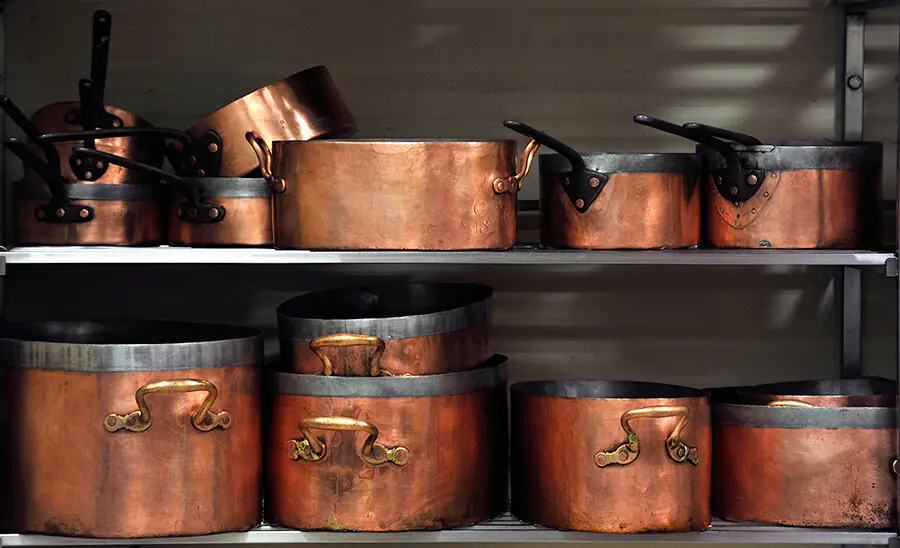
My heart always swells when I see sparkling copper pots hanging beautifully in a row – whether in the technically cool ambience of a kitchen in stainless steel or in a country kitchen. For me, a clear order in the kitchen is essential. Every pot, every utensil has its fixed place. The things I use frequently have to be within easy reach, without me having to open drawers, rummage around in them and close them again. That’s how I see it in this New York kitchen, or in the last example of the Windsor Castle kitchen. But I can assure you that there are areas in my home where there is far less love of order.
It is certainly exciting and educational to watch chefs prepare food. Watching them live is quite different from watching cooking shows on TV or video. On the other hand, this cooking show has the small disadvantage that it might be difficult for the guests to talk to each other because of the seating arrangements.
I’m already looking forward to the next season of “Kitchens with copper”.
Thanks Martin! I’m glad you are enjoying this series, and yes, there are more to come. They’re fun for me to write and I enjoy inviting readers to look closely at the pieces with me to make some guesses at the identification!
On the question of the manufacturer of the pans:
I took a close look at the copper pans, using the photos in my archive, which have better resolution, for this purpose. The design of the pans and their cast iron handles with stainless steel rivets, as well as the uniformity of the pans achieved by a high precision of manufacture, immediately made me think of the M’heritage series (M250) of Mauviel. However, I noticed three oval fish pans with curved edges that did not belong to this series and reminded me of my Bourgeat pan that I foolishly sold a few years ago. But I couldn’t make out the typical Bourgeat stamp that is centered on the bottoms. To be more certain, I searched the internet again and sure enough, I came across a close-up of the copper pots of this gourmet temple! Now, not only were the design details of the Mauviel pans (material, shape, finish and positioning of the handles; rivets and rounded transitions from the base to the side wall) clearly visible, but so was the Bourget stamp with the centered number indicating the diameter of a pan. Unfortunately, the Mauviel stamps to the left of the handles can only be guessed. To be able to read them, the resolution of this photo is also too low.
With a probability of 99%, the pans come from the production of Mauviel and (very few) Bourgeat.
Translated with http://www.DeepL.com/Translator (free version)
Steel blows, why go copper when you are going to cover it with steel that sticks. But, yes, without doubt, using copper ups ones food game a lot.
One can never achieve on steel what can be easily done on copper. Let’s be honest, iron is best used for pot handles. I am not going to crack an egg and try to cook it off a pot handle, but many do just this.
😉